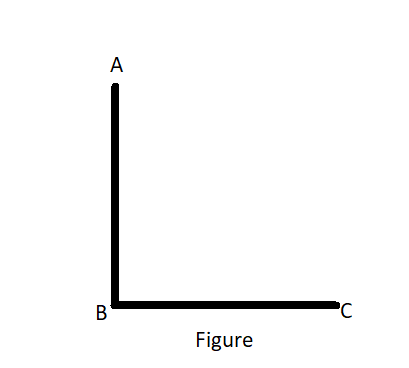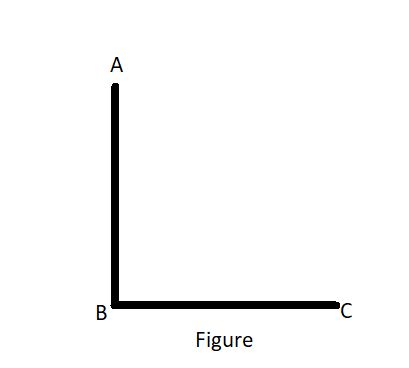Geometry Homework Practice Workbook 1st Edition Chapter 2 Inductive Reasoning and Conjecture
Page 21 Problem 1 Answer
We are given that if the sum of the measures of two angles is 180, then the angles are supplementary. m∠A+m∠B is 180.
We are given the conclusion that ∠A and∠B are supplementary.
We have to determine whether the stated conclusion is valid based on the given information.
We will use law of detachment and determine the result.
We have been given that if the sum of the measures of two angles is 180, then the angles are supplementary.
We are also given that m∠A+m∠B=1800
The statementm∠A+m∠B=1800
⇒∠A+∠B=1800
Thus, the sum of angles A and B is 180.
Hence the conclusion that ∠A and ∠B are supplementary is valid.
If the sum of the measures of two angles is 180, then the angles are supplementary and m∠A+m∠B=1800, then the conclusion that ∠A and∠B are supplementary is valid as the conclusion holds true using law of detachment.
Page 21 Problem 2 Answer
We are given that if the sum of the measures of two angles is 90, then the angles are complementary and m∠ABC is 45 and m∠DEF is 48
We are given the conclusion that ∠ABC and ∠DEF are complementary.
We have to determine whether the stated conclusion is valid based on the given information.
We will use law of detachment and calculate the result.
We have been given that If the sum of the measures of two angles is 90, then the angles are complementary.
And m∠ABC=450
m∠DEF=480
Calculating the sum we get,
m∠ABC+m∠DEF=45+48
m∠ABC+m∠DEF=930
Thus, the sum of ∠ABC,∠DEF is not 90.
Hence the conclusion that ∠ABC and ∠DEF are complimentary is not valid.
If the sum of the measures of two angles is 90, then the angles are complementary.
m∠ABC is 45 and m∠DEF is 48, then the conclusion that ∠ABC and ∠DEF are complementary is invalid, as the sum of angles is not 90 and makes the conclusion false.
Page 21 Problem 3 Answer
We are given that if the sum of the measures of two angles is, then the angles are supplementary, and ∠1,∠and 2 are a linear pair.
We are given the conclusion that ∠1 and∠2 are supplementary.
We have to determine whether the stated conclusion is valid based on the given information.
We will use law of detachment and calculate the result.
We have been given that if the sum of the measures of two angles is 180, then the angles are supplementary.
And ∠1 and∠2 are a linear pair.
We know that in a linear pair sum of all the angles is 180.
Thus, ∠1+∠2=180.
And the conclusion ∠1 and∠2 are supplementary is valid.
If the sum of the measures of two angles is 180, then the angles are supplementary. ∠1,∠2 forms a linear pair.
The conclusion that ∠1 and∠2 are supplementary is valid as the conclusion holds true using the law of detachment.
Page 21 Problem 4 Answer
We are given that If two angles are complementary, then the sum of their measures is 90.
If the sum of the measures of two angles is 90, then both of the angles are acute.
We have to draw a valid conclusion from each set of statements, We will use the law of syllogism and calculate the result
The statement if two angles are complementary, then the sum of their measures is 90 is true.
The statement If the sum of the measures of two angles is 90, then both of the angles are acute.
Then the valid conclusion that can be drawn from statements is, if two angles are complementary, then both of the angles are acute.
The valid conclusion that can be drawn from statements if two angles are complementary, then the sum of their measures is 90.
If the sum of the measures of two angles is 90, then both of the angles are acute. is, if two angles are complementary, then both of the angles are acute.
Page 21 Problem 5 Answer
We are given that if the heat wave continues, then air conditioning will be used more frequently.
If air conditioning is used more frequently, then energy costs will be higher.
We have to draw a valid conclusion from each set of statements, We will use the law of syllogism and calculate the result
The statement if the heat wave continues, then air conditioning will be used more frequently is true.
The statement if air conditioning is used more frequently, then energy costs will be higher is true.
Then the valid conclusion that can be drawn from statements is, if the heat wave continues, then energy costs will be higher.
The valid conclusion that can be drawn from statements if the heat wave continues, then air conditioning will be used more frequently is true and if air conditioning is used more frequently, then energy costs will be higher is true is, if the heat wave continues, then energy costs will be higher.
Page 21 Problem 6 Answer
We are given that if it is Tuesday, then Marla tutors chemistry.
If Marla tutors chemistry, then she arrives home at 4 P.M.We have to draw a valid conclusion from each set of statements, We will use the law of syllogism and calculate the result
The statement if it is Tuesday, then Marla tutors chemistry is true.
The statement if Marla tutors chemistry, then she arrives home at 4 P.M is true.
Then the valid conclusion that can be drawn from statements is if it is Tuesday, then Maria arrives home at 4 P.M
The valid conclusion that can be drawn from statements if it is Tuesday, then Marla tutors chemistry and if Marla tutors chemistry, then she arrives home at 4 P.M. is, if it is Tuesday, then Maria arrives home at 4 P.M
Page 22 Problem 7 Answer
We are given that If a point is the midpoint of a segment, then it divides the segment into two congruent segments. R is the midpoint of QS
We are given the conclusion that QR≅RS
We have to determine whether the stated conclusion is valid based on the given information.
We will use law of detachment and determine the result.
We have been given that If a point is the midpoint of a segment, then it divides the segment into two congruent segments.
And R is the midpoint of QS
Then R, will divide QS into two congruent segments.
That is, QR≅RS
Thus, our conclusion is valid.
If a point is the midpoint of a segment, then it divides the segment into two congruent segments and R is the midpoint of QS then the conclusion QR≅RS is valid, as our conclusion holds true using law of detachment.
Page 22 Problem 8 Answer
We have a given statement.
We will conclude the statement.
We will be using mathematical operations to find the result.
We draw a segment AB≅BC that is

We can see in figure B is not a mid-point.

So, the conclusion which is given is invalid.
In the figure, we can see AB≅BC, but B is not a midpoint of the line AC.
Hence, we can say the conclusion which is given is invalid.
Page 22 Problem 9 Answer
We have a given question.
We will give a conclusion which is right.
We know the hurricane category5
wind speed more than 157mph.
Hence, we can say a hurricane is a category 5, then winds are greater than 155mph and it can be blown down by trees, shrubs, and signs.
The category 5 hurricane speed is more than 157mph.
So, the conclusion is, we know a hurricane is a category 5, wind speed is greater than 155mph, and it can be blown down by trees, shrubs, and signs.
Page 22 Problem 10 Answer
We have a given statement.
We will find the conclusion of the statement is satisfy the Law of Detachment or the Law of Syllogism.
We know that the Law of Detachment is the order to allow what we desire to materialize in the physical universe.
Hence, we can say the whole even number, that is I am thinking, it can be divided by 4 that is a square.
The conclusion is, the square of the number I am thinking it can divisible by 4.
And it obeys the Law of Detachment.
Page 22 Problem 11 Answer
We have a given statement We will find the conclusion of the statement is satisfy the Law of Detachment or the Law of Syllogism.
We know the law of syllogism, also called reasoning by transitivity, is a valid argument form of deductive reasoning that follows a set pattern.
Hence, we can say if the virus is a parasite, then it can harms its host.
We can conclude the statement that is, if the virus is a parasite, then it can harm its host.
And it obeys the Law of Syllogism.
